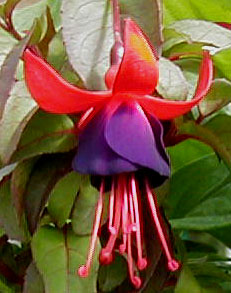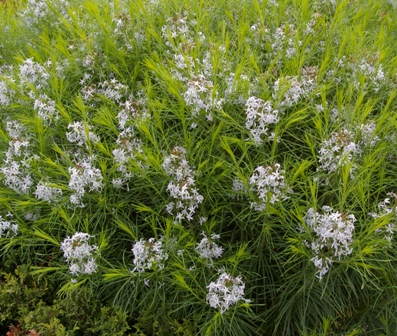When we started Joy Creek Nursery, the old farm house on the property was entirely encased in a mix of rhododendron cultivars. There were so many of them that the house felt gloomy inside. Mike Smith, who owns the house and property, is from eastern Oregon and is used to more open sunlight. Therefore, as we began to expand our gardens, Mike saw a perfect opportunity to lift the rhododendrons and use them to form the backdrop of our future garden beds.
We lifted the well-established shrubs after the autumn rains began and selected a group of Rhododendron ‘Jean Marie de Montague’ to form the backbone of a long border above our Rose and Clematis border. These shrubs now provide a colorful show in April and early May.
After the rhododendrons had reestablished themselves, we began to explore the idea of growing clematis in them. Brewster Rogerson, the well-known local authority on clematis, suggested that we grow the double-flowered clematis in our rhododendrons. He thought they would add color to the border after the ‘Jean Marie de Montague’ had finished their bloom.
For many years, Clematis ‘Belle of Woking’, ‘Countess of Lovelace’, JOSEPHINE, and ‘Kiri te Kanawa’ have been stellar additions to this section of the garden performing just as Brewster said they would. This spring, however, has been warm and dry and we were surprised to find Clematis ‘Countess of Lovelace’ in full bloom at the same time as the ‘Jean Marie de Montague’. This gave us an opportunity to take some unique photos!






















